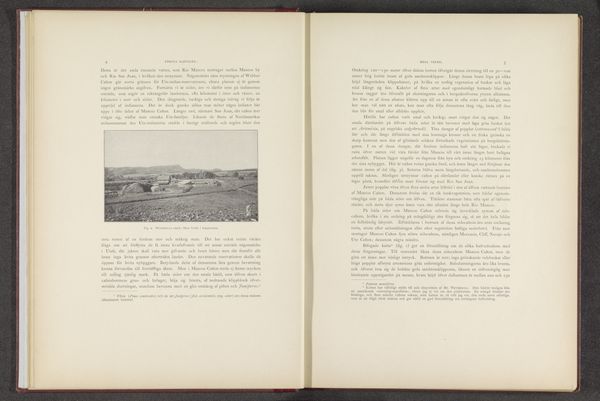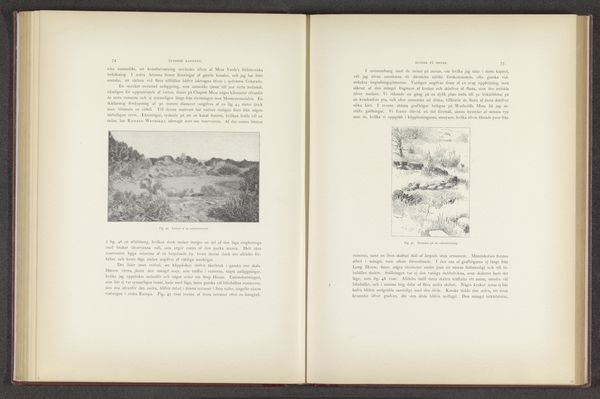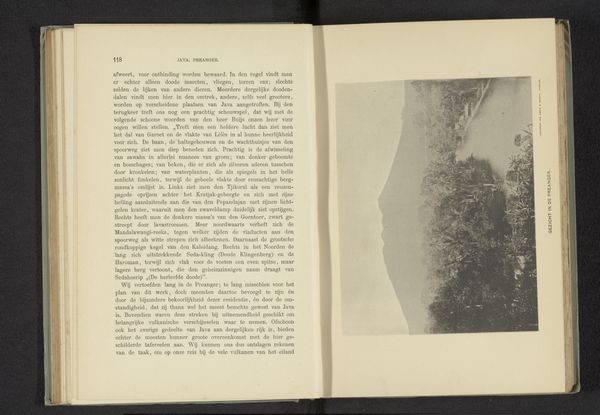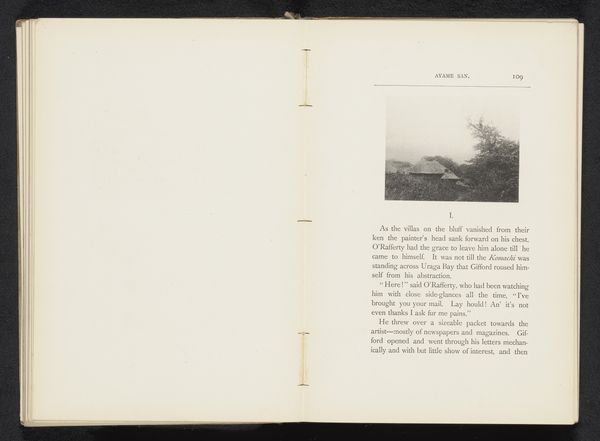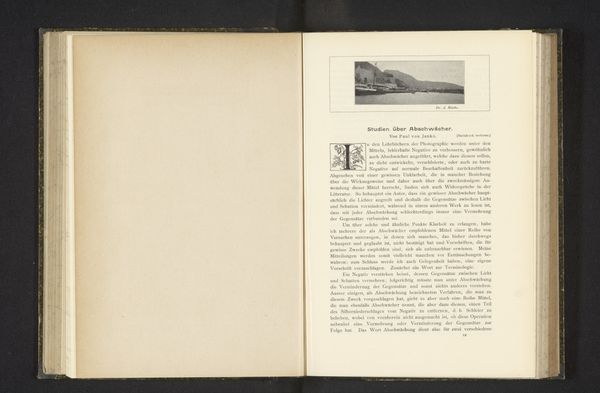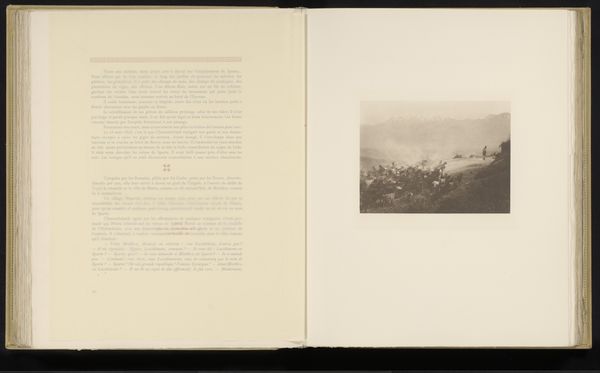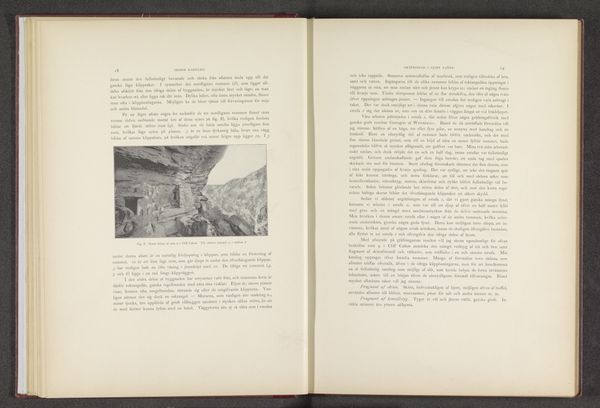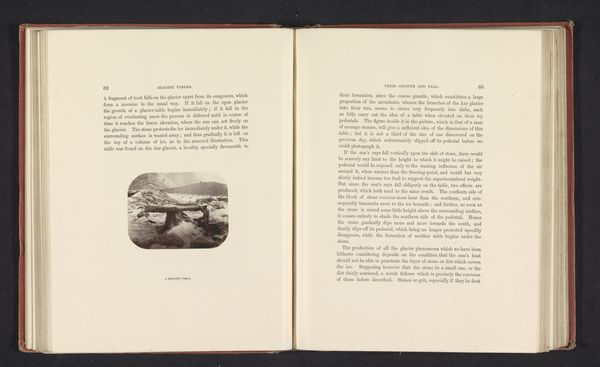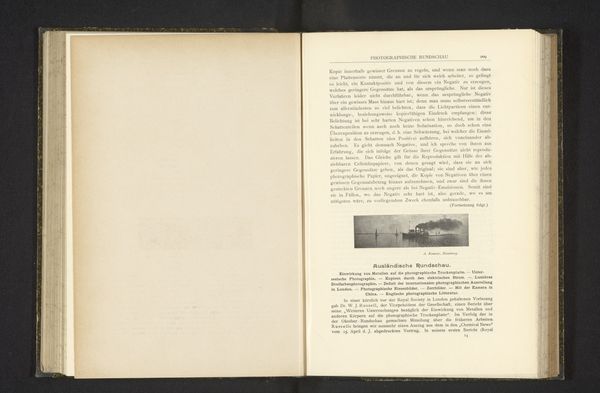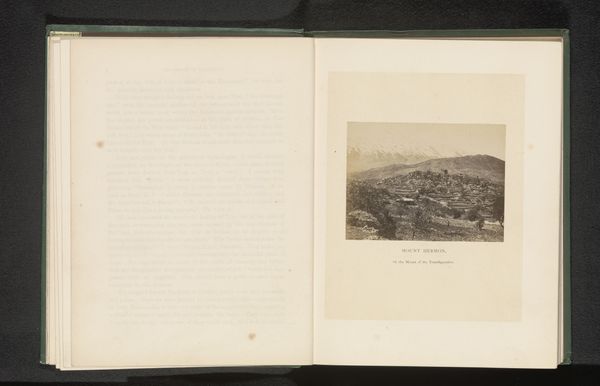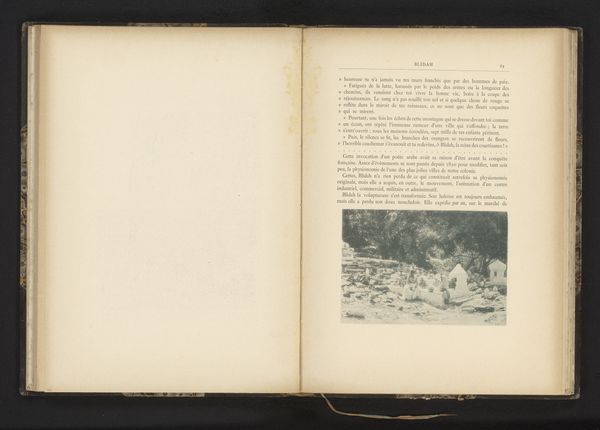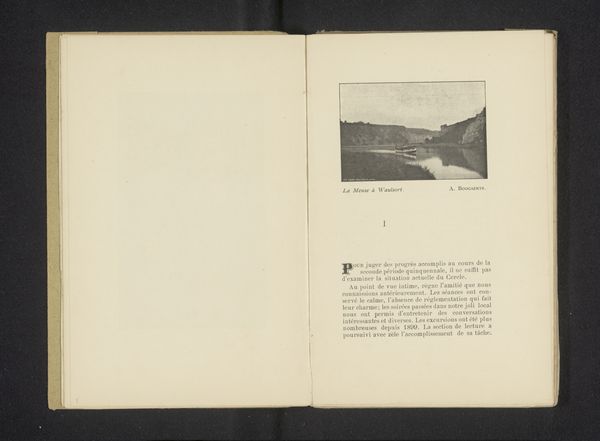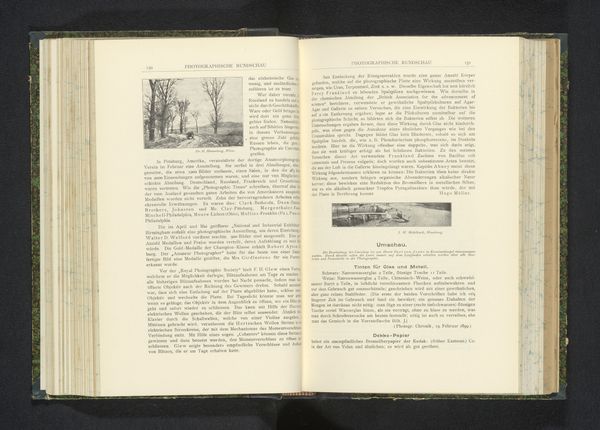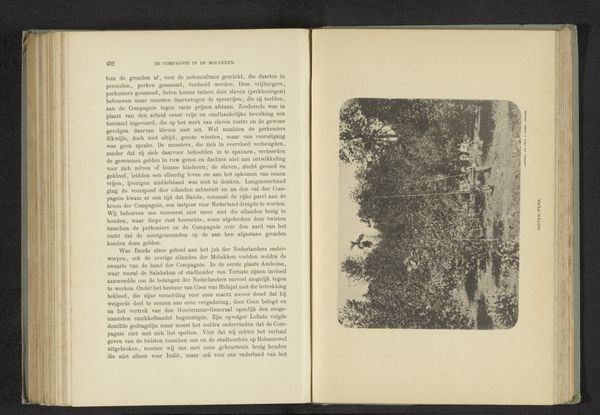
Trap uit rotsen gehouwen, naar een rotswoning in Mesa Verde National Park before 1893
0:00
0:00
photography, architecture
#
landscape
#
photography
#
architecture
#
indigenous-americas
Dimensions: height 97 mm, width 57 mm
Copyright: Rijks Museum: Open Domain
Editor: Here we have an interesting photogravure, a print titled "Trap uit rotsen gehouwen, naar een rotswoning in Mesa Verde National Park" which translates to "Stairs carved from rocks, to a rock dwelling in Mesa Verde National Park." It was created before 1893 by Gustaf Nordenskiöld. The stark black and white image is simple yet striking. I'm immediately drawn to how the image appears within this older book; I am curious, what jumps out at you when you look at this photograph? Curator: The positioning of the image within a publication itself conveys an assertion of control, doesn't it? This photograph comes from a moment when anthropology, and particularly the study of Indigenous peoples in the Americas, was solidifying as a scientific discipline. Photography was often used as "evidence." Nordenskiöld's print reinforces a narrative about "discovery" and "documentation," potentially obscuring the rich history of the site and its inhabitants with a veneer of European objectivity. Does that thought resonate with your initial reading? Editor: Yes, absolutely. Framing the photograph in that way makes me consider how the original audience may have viewed these ancient dwellings. It highlights the power dynamics at play—the colonizer gaze documenting, essentially claiming ownership over the narrative and imagery of a culture that was already present and thriving. Were images like this widely disseminated at the time, furthering that skewed narrative? Curator: Indeed. These photographs circulated in publications aimed at both popular and academic audiences, solidifying specific interpretations of Mesa Verde. It's crucial to acknowledge that the "truth" these images purported to represent was constructed, filtered through the photographer's perspective, and framed within the existing colonial power structure. This also contributed to public interest in these sites and their accessibility through public funding and tourism. Editor: It’s eye-opening to consider the layers of interpretation influencing our understanding of historical artifacts. It makes you question the assumed objectivity that comes with a simple black-and-white image. Thanks! Curator: Agreed. Analyzing such materials through the lens of social and political contexts gives us a far more comprehensive understanding of the artifact and its public implications.
Comments
No comments
Be the first to comment and join the conversation on the ultimate creative platform.
